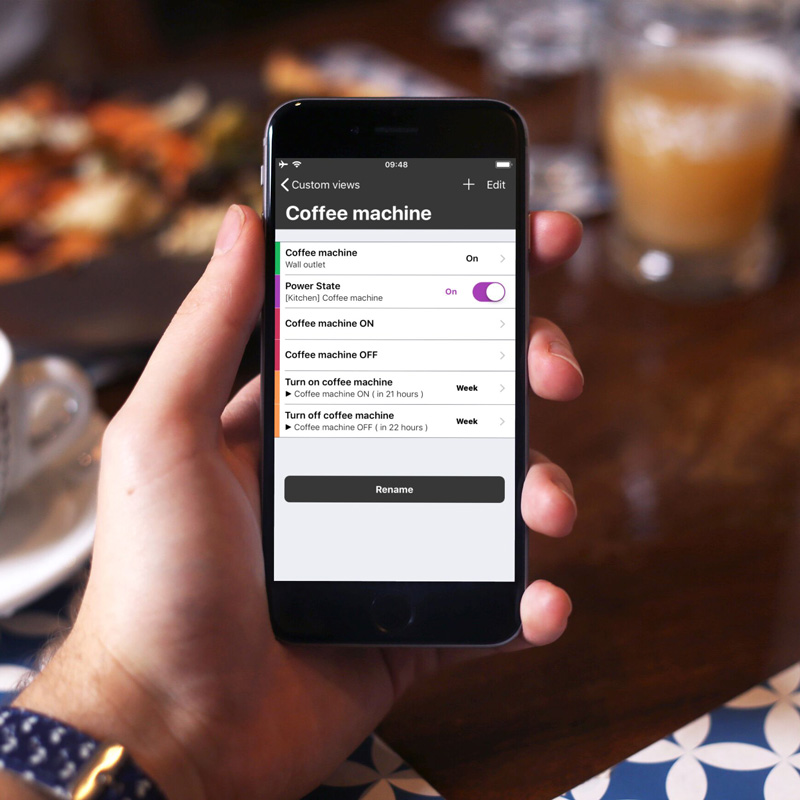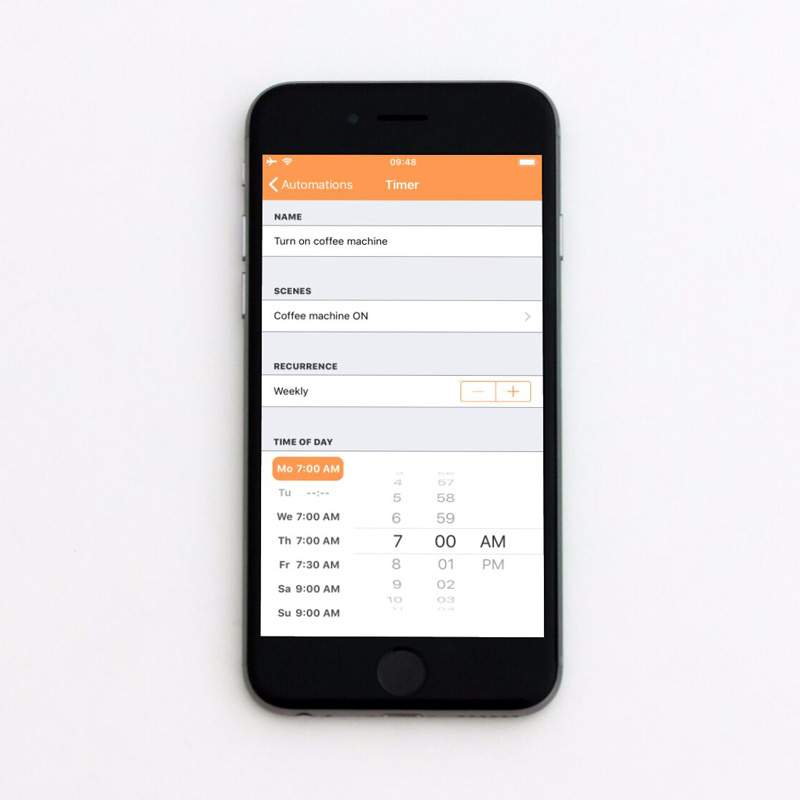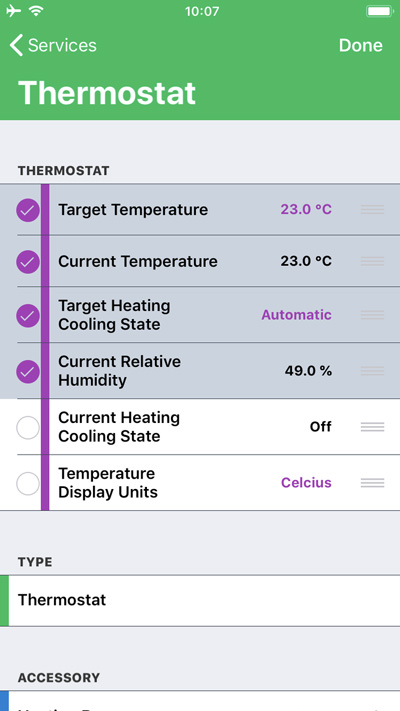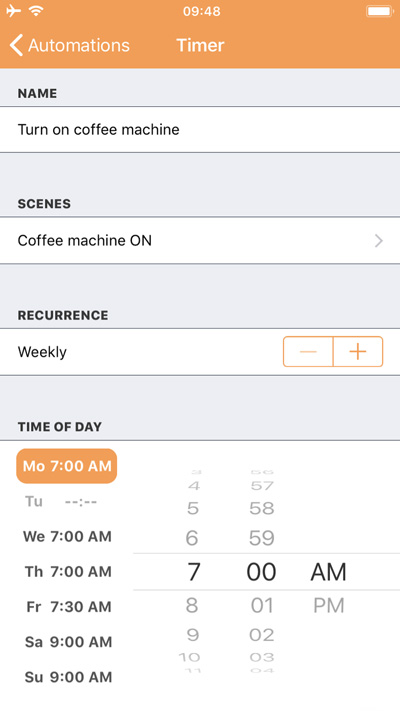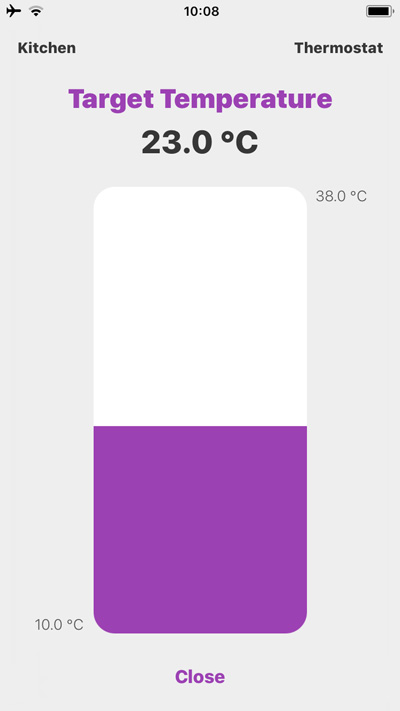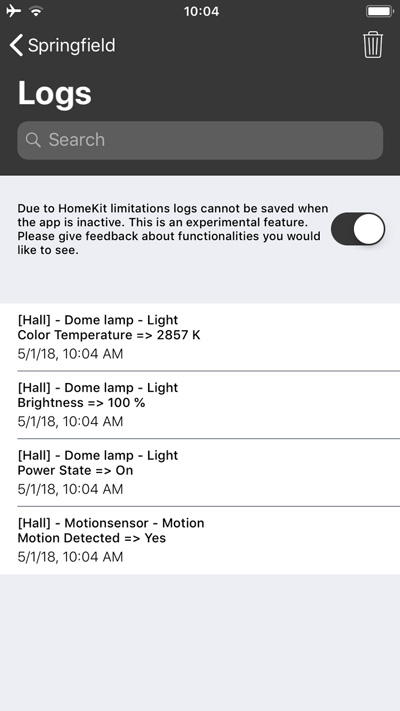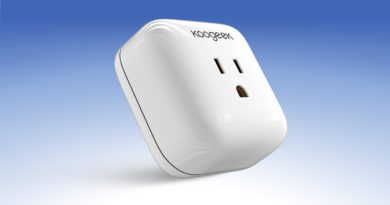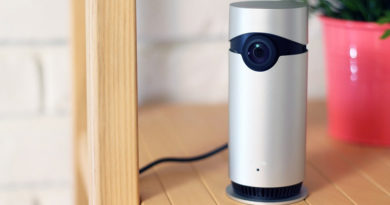‘Controller for HomeKit’ for iOS (review)
FREE (basic version) | £3.99 (UK) | $3.99 (US) | €4.49 (EU) (Pro version) | controller-for-homekit.com
As most of us are aware now, there are many HomeKit-based apps, a good portion of which are from the manufacturers of the HomeKit products they’re designed to work with (Think Elgato Eve’s Eve app, for example). Then there are the 3rd party apps, by some really imaginative developers, who have tapped into areas of the HomeKit framework that, for some reason, Apple’s own official app hasn’t taken advantage of.
Jan André’s ‘Controller for HomeKit’ is one such app, taking control of not only the unused sections of HomeKit, but also adding their own take on the layout and overall functionality, which I’ll touch upon later.
First impressions
With my personal preference for clean layouts, and not too much colour (unless used judiciously), this app ticks that first box. The various sections that you can dive into are all colour coded using a small side tab, with the areas in basic text. These aforementioned areas are ‘Custom Views’, ‘Automations’, Scenes’, ‘Services’, ‘Service Groups’, ‘Accessories’, ‘Cameras’, ‘Rooms’ and ‘Zones’. Many users of 3rd party apps will be familiar with most of these headings, so getting started with this app will be fairly familiar, and as with all apps of this type, you will initially have to grant access to your HomeKit database, so that all existing automations, devices etc. can populate that app. Tapping on each of these sections, slides you across to another page, which is a nice little touch, especially since each page that subsequently opens has colour coding to match the initial colour tab.
Special functionality
So, what does this app do that others don’t, or maybe do differently? Well the big selling point here is the first area mentioned – ‘Custom Views’. However, before I go any further, it’s important to note that ‘Custom Views’ is only available in the paid Pro version of the app, which is accessed via the in-app purchase mechanism within the free app. The other two Pro functions are a pretty handy ‘Search’ tool; very useful for when you start to build up a lot of HomeKit devices or have lots of rooms. And finally, a set of ‘advanced customisation functions’ which allows you to reorder all kinds of data types inside their views, and hide unneeded services and characteristics. By reordering services and characteristics of various accessories, you are able to are precisely define the data shown in their detailed information and the 3D touch destination.
Let’s go back to the ‘Custom Views’ option for now; This simply allows you create customisable pages or ‘views’ showing only the info and devices you want to see at any given time, so if you have a kitchen full of smart plugs, but only want to see the one used for your coffee machine, and any specific characteristics of that device, you can set a custom view for this. In fact, you can also include any triggers or automations that relate to that specific device. Of course, you’re not stuck with just one device per ‘Custom View’, so if you’re really adventurous, you could have a custom ‘breakfast’ view that might include your coffee machine, toaster, mood lighting and more, all controlled from one page. Quite clever really, but so simple. It’s also worth noting that while you might typically have a custom view, like the example mentioned where all the devices would be in the kitchen, you’re not actually restricted by room, so you could include many devices and automations across rooms without any issues.
There is another feature that sticks out, and it’s available to use with either the free or paid versions, and that is and ‘experimental feature’ called ‘show logs’. This is basically a way of you logging information on devices and how they are performing at any given time. As this is listed as an experimental feature, there are certain limitations, one of which is that these logs can only be created if the app is active.
Day to Day usage
on a day to day level, you may or may not find this type of app as useful as using Siri, or example. Speaking for myself, I do tend to use the official Home app as my ‘go to’ controller for turning devices on or off, or changing a particular aspect of a device (hue or brightness for lights etc.), but when it comes to programming even mildly complex automations or triggers, I would say that this app, and others like it would be the first choice, for the reasons I’ve previously mentioned regarding the ‘Home’ apps own shortcomings. Indeed, if you’re one of those people who has a routine that doesn’t change but still want to quickly access certain devices and automations on an ongoing basis, then the ‘custom views’ function is pretty useful.
I won’t go into the standard features of the app and what it does when it comes to what is available universally to all other apps, but one thing to note is how responsive it is to touch. The sliders for controlling light hue and brightness are particularly smooth to the touch, and when it comes to selecting a hue for your colour lights, the slider is much better than the wheel circle found in the official Home app.
Overall verdict
As one of those types of people that really loves to tinker with HomeKit to a great degree, I’d have to say while not essential for most of my day to day usage, it’s still a very useful app to have as part of my set of ‘tools’ and given that it’s free (excluding the 3 special areas of functionality) you’ve really got nothing too lose. When you compare it to other similar paid apps, like ‘Home’ by Matthias Hochgatterer, then the price is very reasonable, and in this day and age, with ongoing support for this kind of app, it’s really just the price of a decent coffee, and it’ll last longer.


